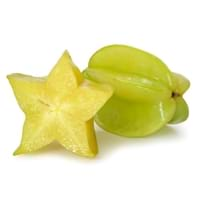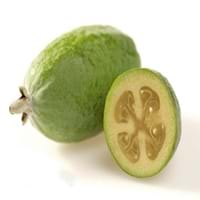Health Benefits
Cancer prevention, Heat stroke treatment
Anti depressant, Cancer prevention, Reduces nervous tension, Treatment of alzheimer's disease, Treatment of Lung disease
General Benefits
Anti oxidant properties, Anti-inflammatory properties, Digestive aid, Maintains healthy cholesterol level, Treatment of sore eyes
Digestive aid, Helps in weight loss, Improves blood circulation, Strengthens bones, Treatment of common cold
Skin Benefits
Anti-aging benefits, Heals sunburn, Skin rejuvenation
Brightens and lightens complexion, Skin rejuvenation
Hair Benefits
Promotes longer and healthier hair, Protects hair
Promotes longer and healthier hair, Protects hair
Side Effects
Nausea, Vomiting
Allergic reaction
Best Time to Eat
As a snack in the late afternoon, Eat the fresh ones, avoid mixing with any other foods, don't eat after meal., Strictly avoid empty stomach
As a snack in the late afternoon, Don't consume at night and before bed, Eat the fresh ones, avoid mixing with any other foods, don't eat after meal., Morning time (before lunch)
Vitamin A (Retinol)
Not Available
Vitamin B5 (Pantothenic Acid)
Vitamin C (Ascorbic Acid)
Vitamin K (Phyllochinone)
Calories in Fresh Fruit with Peel
Not Available
Calories in Fresh Fruit without Peel
Not Available
Calories in Frozen Form
Not Available
Not Available
Calories in Canned Form
Not Available
Not Available
Calories in Jam
Not Available
Calories in Pie
Not Available
Type
Tree fruit
Tree fruit
Season
Autumn, Spring, Summer
Autumn, Winter
Varieties
King, Bell, Sri Kembangan, Arkin and Fwang Tung
Anatoki, Gemini, Kaiteri, Kakariki, Pounamu, Unique, Apollo, Den's Choice, Kakapo, Mammoth, Opal Star, Triumph and Wiki Tu
Color
Golden yellow, Green
Green
Inside Color
Yellowish Green
White
Shape
Oval and Star(Cross section)
Oval
Taste
Crisp, Juicy, Sweet
Sweet
Origin
Sri Lanka
Argentina, Brazil, Paraguay, Uruguay
Grows on
Not Available
Not Available
Soil Type
Loam, Well-drained
Clay loam, Gravely loam, Sandy
Climatic Conditions
Moist, Warm to hot climate
Cold, Warm
Facts about
- When carambola is cut horizontally, it forms a star.
- It is believed that carambola helps to cure hangover.
- Entire carambola is edible, including its skin.
- 2 varieties of carambola are cultivated: tart & sweet.
- Feijoa is called as "pineapple guava" in some countries.
- Feijoa tree is an ornamental plant that can also be used as hedge & windbreak.
- All parts of feijoa fruit are edible(skin is mostly discarded).
Top Producer
Taiwan
New Zealand
Other Countries
Australia, Guyana, India, Israel, Malaysia, Philippines, United States of America
Australia, Azerbaijan, India, Japan, United States of America
Top Importer
Europe
China
Top Exporter
Malaysia
New Zealand
Botanical Name
Averrhoa carambola
Acca sellowiana
Synonym
Not Available
Feijoa sellowiana or Orthostemon sellowianus
Subkingdom
Tracheobionta
Tracheobionta
Division
Magnoliophyta
Magnoliophyta
Class
Magnoliopsida
Magnoliopsida
Order
Oxalidales
Myrtales
Family
Oxalidaceae
Myrtaceae
Species
A. carambola
A. sellowiana
Generic Group
Not Available
Myrtle
Difference Between Carambola and Feijoa
We might think that Carambola and Feijoa are similar with respect to nutritional value and health benefits. But the nutrient content of both fruits is different. Carambola and Feijoa Facts such as their taste, shape, color, and size are also distinct. The difference between Carambola and Feijoa is explained here.
The amount of calories in 100 gm of fresh Carambola and Feijoa with peel is 31.00 kcal and Not Available and the amount of calories without peel is Not Available and 55.00 kcal respectively. Thus, Carambola and Feijoa belong to Low Calorie Fruits and Low Calorie Fruits category.These fruits might or might not differ with respect to their scientific classification. The order of Carambola and Feijoa is Oxalidales and Myrtales respectively. Carambola belongs to Oxalidaceae family and Feijoa belongs to Myrtaceae family. Carambola belongs to Averrhoa genus of A. carambola species and Feijoa belongs to Acca genus of A. sellowiana species. Beings plants, both fruits belong to Plantae Kingdom.









